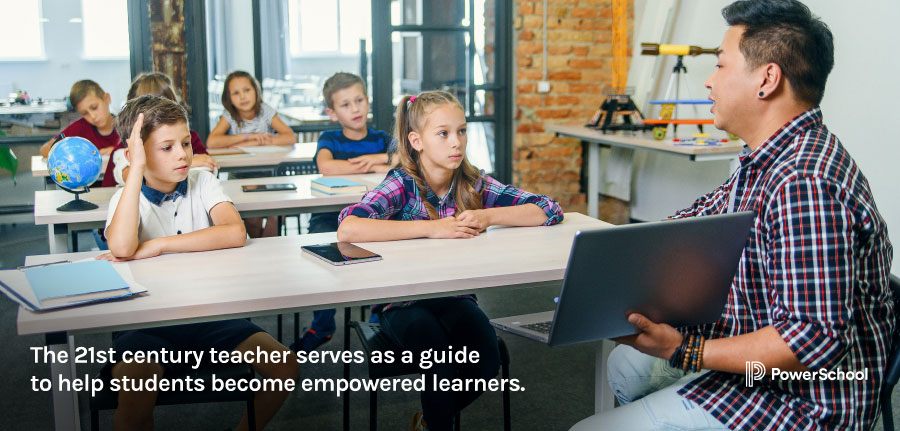Written by
Dennis Pierce
The 21st century teacher serves as a guide to help students become empowered learners. The most impactful teachers deepen their practice, promote collaboration in the classroom, and rethink traditional approaches to put students in the driver’s seat on their learning journey.
To more accurately reflect teacher roles as empowered leaders, professionals, and instructors, the International Society for Technology in Education (ISTE) established the ISTE Standards for Educators, which define the skills and competencies that today’s teachers should demonstrate.
When updating the standards in 2017, the organization says it received feedback from roughly 2,200 educators and administrators from around the globe.
Whereas the previous standards focused on supporting learning with technology, the revised standards reflect the role of teachers as empowered leaders and professionals as well as classroom instructors, said Sarah Stoeckl, senior project manager for ISTE Standards.
“In the old version, the view of teachers as empowered leaders wasn’t as well-defined,” she said. What’s more, Stoeckl added, the updated standards are designed for educators at all levels of instruction, including instructional coaches—and not just for classroom teachers.
According to ISTE, there are the seven key functions that today’s educators should fulfill. Here are the skills and competencies they should demonstrate in each of those roles:
- Learner: Educators continually improve their practice by learning from and with others and exploring proven and promising practices that leverage technology to improve student learning.
- Leader: Educators seek out opportunities for leadership to support student empowerment and success and improve teaching and learning. They advocate for equitable ed-tech access and have input on ed-tech purchasing and evaluation.
- Citizen: Educators inspire students to positively contribute to and responsibly participate in the digital world.
- Collaborator: Educators dedicate time to collaborate with both colleagues and students to improve practice, discover and share resources and ideas, and solve problems.
- Designer: Educators design authentic, learner-driven activities and environments that recognize and accommodate learner variability.
- Facilitator: Educators facilitate learning with technology to support student achievement.
- Analyst: Educators understand and use data to drive their instruction and support students in achieving their learning goals.
“The ISTE Standards for Educators set the vision for how educators can use technology to create next-generation learning environments,” stated ISTE CEO Richard Culatta in a press release. “They reflect the transition from using technology to deliver content to using technology to empower learners.”
Find out how PowerSchool is helping empower teachers to manage the entire instructional process more efficiently with a seamless, connected classroom experience.
Student Success Resource Kit
We’ve compiled resources to help you support your educators with the tools they need during a time of digital transformation.
Get Resource Kit


